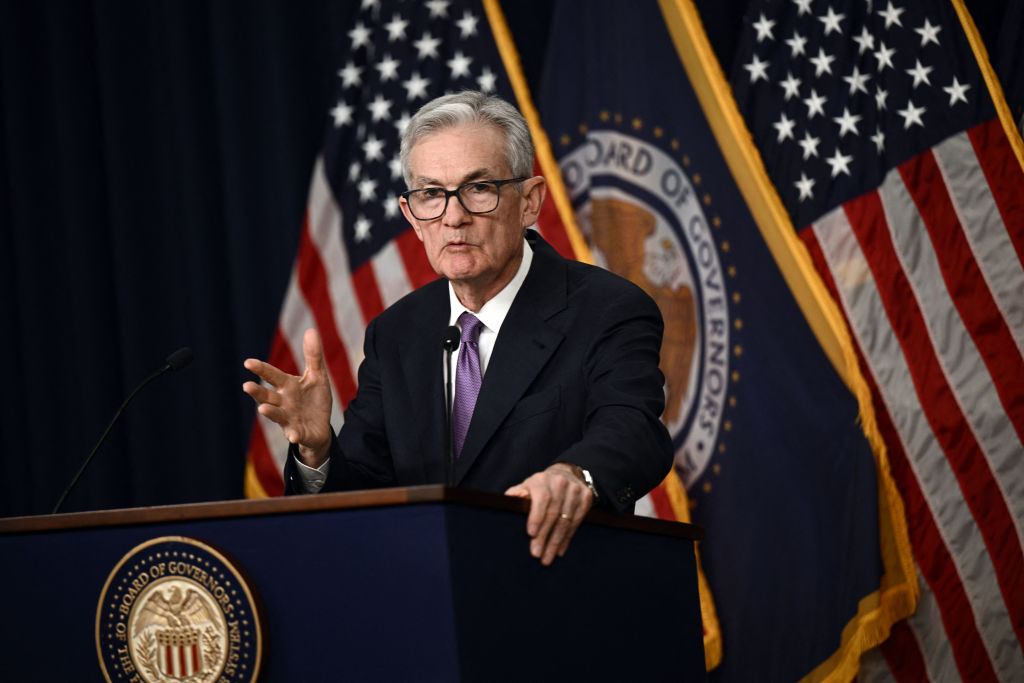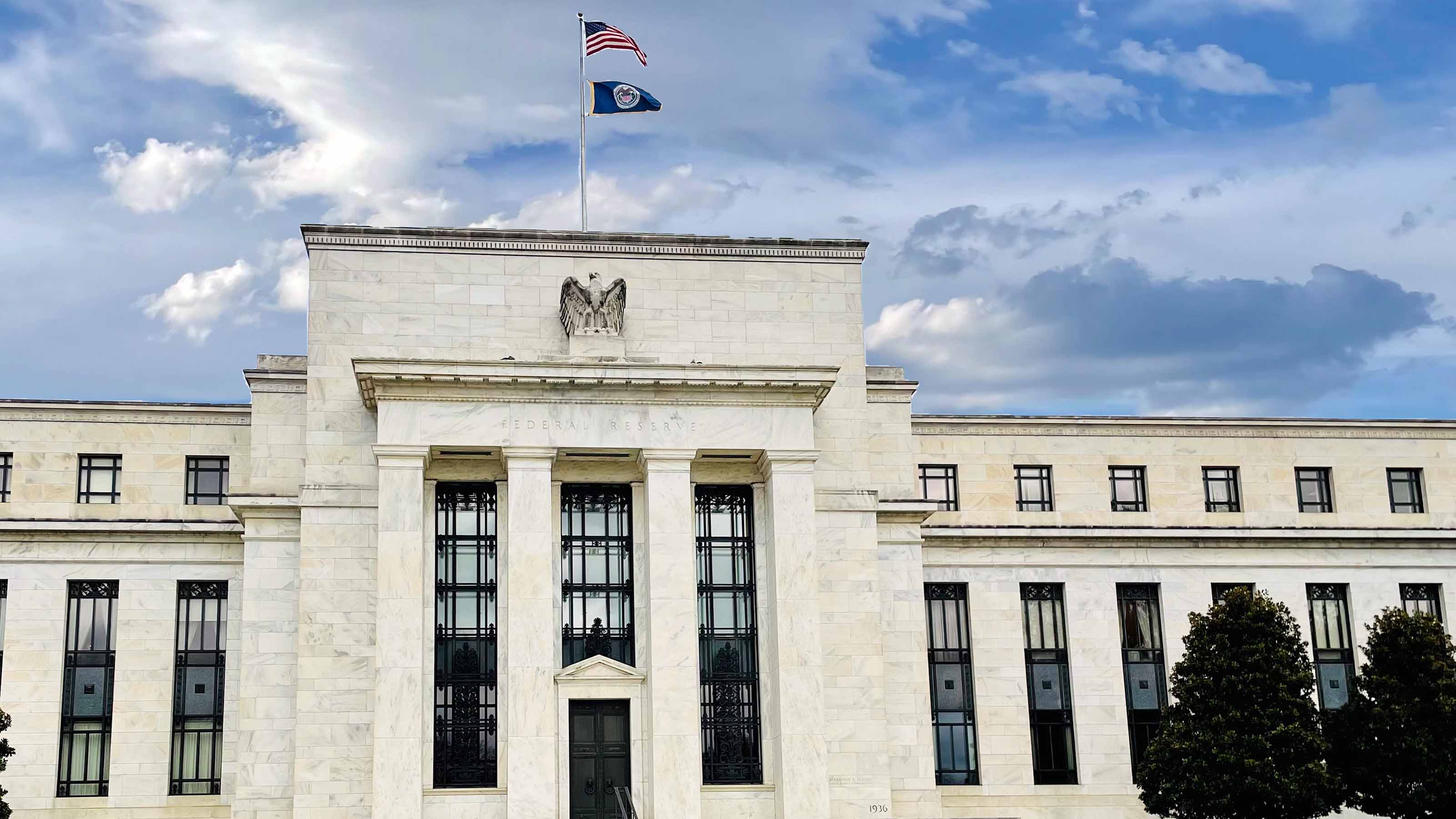
The Federal Reserve made the widely expected move of leaving interest rates at a 23-year high on Wednesday and signaled just one quarter-point cut for the remainder of the year.
The central bank's rate-setting committee wrapped up its regularly scheduled two-day policy meeting by keeping the short-term federal funds rate unchanged at 5.25% to 5.5%. More interesting was the quarterly Summary of Economic Projections (SEP), also known as the dot plot, which shows the Federal Open Market Committee's (FOMC) estimated path forward for rates.
Per the dot plot, the Fed now sees just one quarter-point cut coming before year-end, down from the three cuts it forecast in March. Overly optimistic market participants were expecting at least six rate reductions in 2024, but sticky inflation data and a robust labor market forced the Fed to delay its pivot toward easing. As part of that pushed out timeline, the FOMC median forecast now sees four quarter-point cuts in 2025, up from three cuts expected in the previous projections.
A soft May CPI report – and cuts by the European Central Bank and Bank of Canada – have increased pressure on the Fed to begin loosening monetary policy. Equity markets, in particular, are eager for the FOMC to begin cutting rates, as lower rates boost valuations.
As for when will the Fed cut rates? The September meeting remains the betting favorite, with futures traders assigning a 59% probability to the FOMC enacting its first quarter-point reduction at the fall confab. That's up from 47% a day ago, according to CME Group's FedWatch Tool.
With the FOMC's latest rate decision now on the books, we turned to economists, strategists and other experts for their thoughts on what the move means for markets, macroeconomics and monetary policy going forward. Please see a selection of their commentary, sometimes edited for brevity or clarity, below.
Interest rates: the experts weigh in

"This is a nothing-burger Fed meeting. They know conditions are improving, but don't need to rush with rate cuts. The strong economy is letting Jerome Powell wring inflation out of the system without hurting jobs. Goldilocks is emerging but policymakers don't want to jinx it." – David Russell, global head of market strategy at TradeStation
"The Fed didn't move on rates, as expected, but their dot plot projections were hawkish, with only one cut projected in 2024 versus three projected back in their March update. However, these dot plot projections likely don't account for the latest May inflation data, which was softer than expected and reversed some of the heat we saw in Q1. We still think the odds are high for two rate cuts in 2024 if the disinflation process continues, as we expect." – Sonu Varghese, global macro strategist at Carson Group
"Four members expect no rate cuts this year – up from two in March – with seven looking for one easing and eight expecting two. No one expects three easings, compared to nine in March. That's quite a shift, not least because it's only June and if payroll growth drops to zero over the next few months while the core PCE run rate returns to target, they'll be easing by a minimum of 75 basis points [0.75 percentage point] this year. The market reaction to the dot plot shows investors are unconvinced by the unexpected hawkishness of the new dots; we think they're right." – Ian Shepherdson, chairman and chief economist at Pantheon Macroeconomics
"We continue to look for two Fed rate cuts this year (September and December). Between now and the expected inaugural action, there will be three CPI and PCEPI reports along with three employment reports. There is plenty of time, and data, for the FOMC to shift its assessment from 'modest' further progress to a sufficient degree of 'confidence-building' progress to start cutting policy rates." – Michael Gregory, deputy chief economist at BMO Capital Markets
"The message from the Fed once again is rates will be lower, just not now. The dots moved up, our expectation, and this may not be the last time it happens as we look further out into 2025. The economy is giving mixed signals, and while the 'no landing' scenario is the most likely, investors should expect volatility in both the rates and equities markets as we parse through likely contradictory data in the coming months. We all like to nitpick each economic data point, but when you zoom out, why does the Fed need to cut more than once, if at all? The economy is robust, in particular the hard data." – Jason Barsema, president and co-founder of Halo Investing
"The Fed also released an updated Summary of Economic Projections at this meeting, and investors' attention was expected to be on the 'dot plot.' Here, the committee made its biggest change, reducing expectations of cuts in 2024 to just 25 basis points [a quarter percentage point] from 75 basis points in March. Following this morning's light CPI report, consensus seemed to be that it could indicate as much as 50 basis points of cuts later this year. One of 2024's cuts was rolled into 2025. The only other notable changes to the SEP were to inflation, which the Fed bumped up estimates modestly for this year." – Jeff Hibbeler, director of portfolio management and senior portfolio manager at Exencial Wealth Advisors
"As anticipated, the Federal Reserve kept rates unchanged in today's announcement. Expectations for an initial rate cut beginning this year increased given softer-than-forecasted CPI data this morning. While the employment component of the Fed's dual mandate continues to remain strong and, with the second component of stable prices showing signs of improvement after a stalling out earlier in the year, an initial rate cut this year is a real possibility. The Fed will remain data dependent and will need to see a trend of multiple months of softening inflation data before they begin to cut rates. Hopes for a Fed executed soft landing remain." – Dustin Thackeray, chief investment officer at Crewe Advisors
"It seems like we finally got a data point that wasn't too-hot-to-dot. The rather mild CPI number (even though the Fed will never fail to remind you of their preference for PCE) seems to have finally brought a rate cut into sight. The Fed referred to these developments as 'modest' and kept their expectations largely still for one rate cut this year. This unexciting rhetoric shouldn't come as a surprise from a Fed that is desperate to retain its most important tool – credibility." – Dann Ryan, managing partner at Sincerus Advisory
"The CPI report dovetailed nicely with the FOMC decision today which was widely anticipated with no change. The timing for the Fed may be a bit tricky as they likely do not want to move politically and make any actions too close to the U.S. election in order to maintain their appearance of independence. Unfortunately, inflation is not necessarily on a timeline related to the election and will make the timing of any rate cuts tricky." – Steve Kolano, chief investment officer at Integrated Partners
"The FOMC's decision to keep rates unchanged was widely anticipated. The latest CPI data fuels positive sentiment around immaculate disinflation, reinforcing the belief that we are on a 'soft landing' trajectory." – Ken Tjonasam, portfolio strategist at Global X







